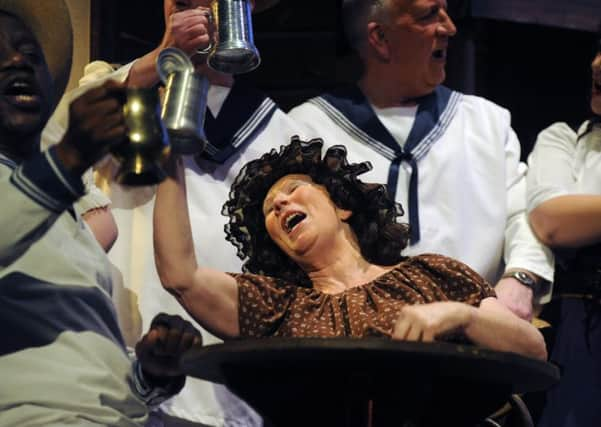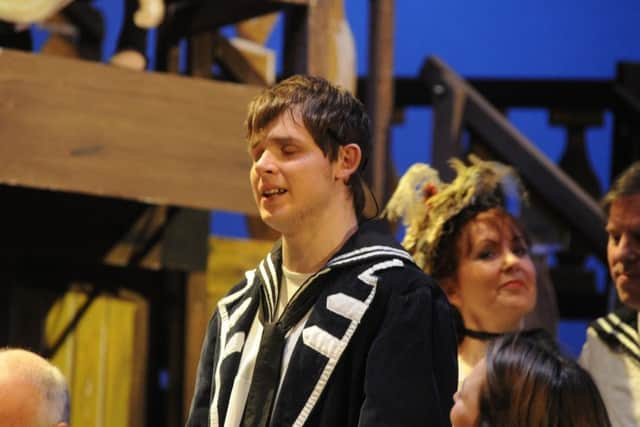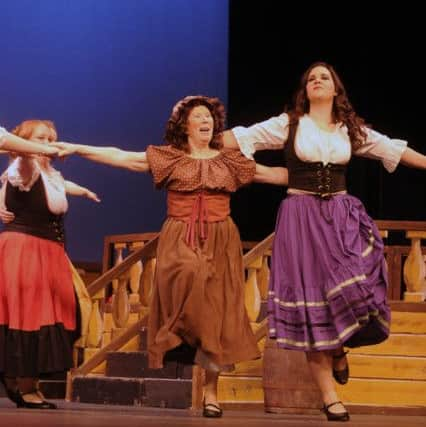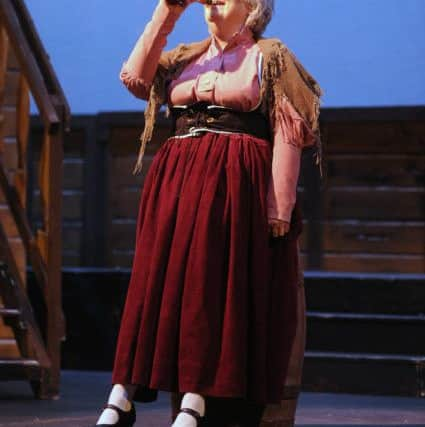All aboard HMS Pinafore! Success of latest Gilbert & Sullivan show in Kirkcaldy


This production by Kirkcaldy Gilbert & Sullivan Society sparkled from beginning to end.
The performance opened, not with Sullivan’s overture, but with the addition of a sea shanty scenario at the quayside tavern alongside which the HMS Pinafore is moored.
Advertisement
Hide AdAdvertisement
Hide AdThe shanties effectively set the nautical atmosphere, and provided an opportunity for one of the youngest members, Bryan McGlashan, to demonstrate his fine tenor voice in a rendering of ‘Come Away Fellow Sailors’ from Purcell’s ‘Dido and Aeneas’.


Having a concertinist and fiddler on stage was a novel idea, well executed by David Corner and Vince Gray respectively. By inserting this opening scene, Robin Ozog, as director, once again demonstrated his great vision for stage setting and direction.
There are only three female principal roles in ‘Pinafore’, but each was filled with distinction. First up was Elaine Young as ‘Little Buttercup’. We are used to hearing her fine contralto voice in many roles in the local music scene, but she clearly excels in the G&S tradition.
Society newcomer, Erin Ireland, thrilled audiences with her beautiful soprano voice. She had excellent stage presence and coped admirably with the very demanding part of Josephine.
Advertisement
Hide AdAdvertisement
Hide AdCaroline Warburton acted and sang very well in the part of Hebe, and her fine voice added a beautiful balance in the two sextets.


HMS Pinafore traditionally has four main principal roles for men and two smaller roles. This production used an additional three men which gave both strength to the singing parts of the boatswain and carpenter and allowed more male chorus members to gain experience in minor roles.
Peter Robinson, playing the part of Ralph Rackstraw, ‘the lowly tar’ and rival for Josephine’s hand, played his part well, and his acting ability shone through convincingly.
The part of Captain Corcoran was played to perfection by Andrew Sim, and Dick Deadeye’s part was made for Niall Aitken, while Robin Ozog played a wonderful Sir Joseph Porter.
Advertisement
Hide AdAdvertisement
Hide AdThe parts of the boatswain, carpenter and the three able seamen played by Stuart Brown, Bryan McGlashan, William Dickson, Derek Ross and Robert Peebles collectively gave a good blend of voices in ‘a British Tar’. Special mention must be made of Able Seaman 1, William Dickson, in an extra cameo role as the Captain’s servant. The addition at the beginning of Act Two of a scene in the Captain’s cabin with William serving dinner accompanied by the overture displaced from the opening of the opera was a clever touch. The show ended with another introduced character. Dick Deadeye’s wife, Euphemia, played entertainingly by Margaret Horne, cleverly tied the ending back to the opening scene.


The recurring appearance of a stowaway ‘Wally’ (Graeme Ferguson) may have baffled many of the older members of the audience, but certainly entertained the younger ones!
Musically, there were times when the chorus tended to get a little enthusiastic, but were well checked and brought back into line by musical director, John Howden. The chorus was very strong and well-balanced and, when joined by the principals, the overall sound was full and impressive.
The whole production was colourful and lively and well received by audiences. The extra twists and turns inserted by the director made this a very enjoyable production.